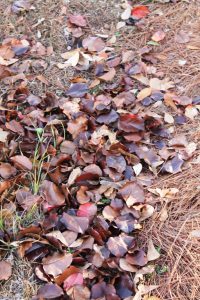 Billions of leaves blanket the fall landscape and are bagged by hundreds of homeowners to be placed curbside for local trash pick-up.
Billions of leaves blanket the fall landscape and are bagged by hundreds of homeowners to be placed curbside for local trash pick-up.
Many of these leaves could be easily turned into valuable mulch or compost.
Why do all those fall leaves end up in bags to be discarded?
It’s probably because the homeowner is overwhelmed by the volume. For instance, one resident reported raking more than 100 large bags of leaves from his half-acre property. One large oak tree can contain over 250,000 leaves!
Bagged and discarded leaves could become a quality mulch or could be composted.
Homeowners have tools for reducing 100 bags of leaves to 10 in their own backyards.
Shredding and composting can reduce leaf volume by 90 percent and provides a manageable quantity of valuable mulch and an excellent organic source for composting and converting into rich humus to improve garden soil.
Shredded leaves stay seated better on the landscape than whole leaves. They also do a better job of holding moisture in the soil and don’t mat down like whole leaves.
But how do you shred leaves if you don’t have a costly leaf shredder?
All you need is a lawn mower, a little extra time and a concern for the environment. Just put the leaves on the lawn in rows around three feet wide and two feet deep.
Then, with the lawn mower at the highest wheel setting, run over the pile. If the mower has a bag attachment, collecting shredded leaves is a neat and easy task.
Without a bag, the easiest way to collect them is to put a 9-by-12-foot drop cloth parallel to the row of leaves. Then, by running the mower in one direction so the leaves are discharged onto the cloth, cleanup is easier.
Throw the shredded leaves in the compost pile to cut the volume by another 50 percent.
Shredded leaves will shrink within a week and compost faster than whole leaves.
To compost dry leaves, add water, a little garden soil and a cup of garden fertilizer.
- Evaluate and Renovate Landscape During Fall - October 30, 2025
- Summer is Too Hot for Lawn Herbicides - August 23, 2025
- Nuisance Gnats abound in Northwest Florida this spring - June 26, 2025
